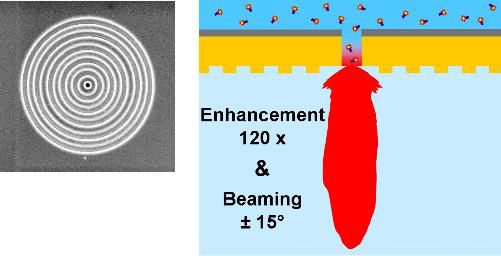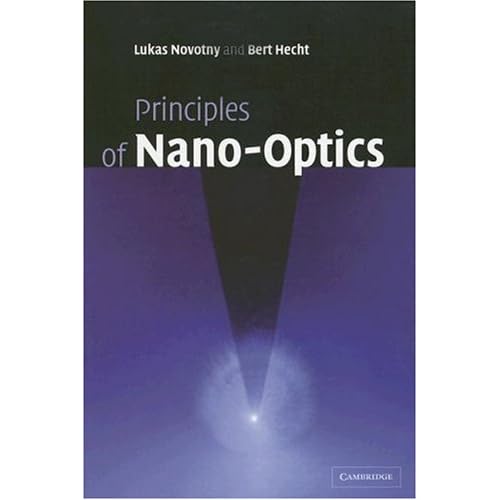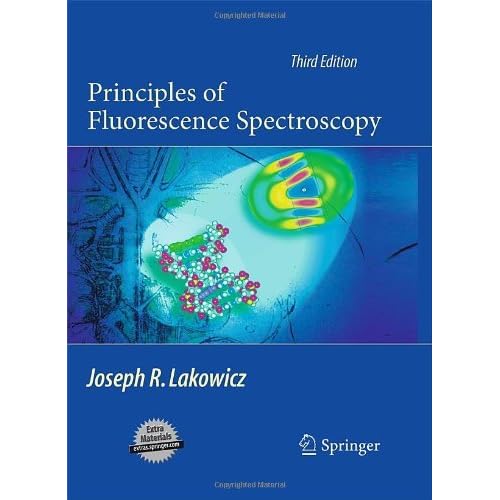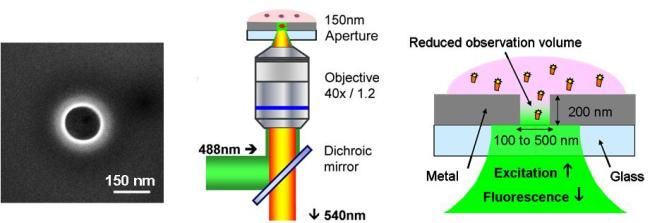Nano Letters paper published online
Our study on fluorescence enhancement and beaming in nanoapertures with circular corrugations has just been released on the Nano Letters website. See the abstract here. A free reprint (for personal use only) can be downloaded here.
Rationale: A wide range of applications in physical and chemical sciences is presently limited by the weak optical signal emitted by a single fluorescent molecule. To overcome this challenge, plasmonic antennas are receiving a growing interest to control both the fluorescence rate and angular emission distribution from single quantum emitters. However, there is currently no experimental demonstration reporting a clear improvement in both the emission intensity and directionality using the same nanoantenna. We solve this issue here.
Results: we report the demonstration of bright unidirectional photon sources from single molecules. The emission rate per molecule is enhanced up to 120 fold, and simultaneously the fluorescence emission is directed into a narrow angular cone of 15°. This work has four major aspects of general interest:
1) Each of our results on enhancing the fluorescence signal and narrowing the angular distribution is going well beyond the current state-of-the-art, and moreover, we achieve both features simultaneously on the same structure, which is unique to our knowledge.
2) Nanoapertures surrounded by periodic corrugations have generated a considerable interest in the photonics community. This is the first study where corrugated apertures are used to enhance the detection of single molecules.
3) We thoroughly quantify the increased light-matter coupling and the radiation pattern at the single emitter level.
4) The bright emission and narrow directionality release the need for high-end microscope objectives. Efficient detection of single molecules is achieved with a simple low numerical aperture objective.

Scientific achievements 2007-2010
On January 05-06th, the entire Fresnel Institute will be evaluated regarding its activities during the 2007-2010 period. The final slide of my presentation for this evaluation will summarize the main achievements (see the links to read more):
2007: live cell membrane investigations with nanoapertures
2008: complete fluorescence characterization in nanoapertures & microsphere-enhanced fluorescence
2009: 100x speed increase in FCS measurements & crucial role of the gold adhesion layer in plasmonics
2010: smallest single molecule fluorescence endoscope & quantum dots to probe nanoantennas
As I will go through several evaluation processes in 2011 (for fundings, CNRS progress...), I hope this type of slide may also help.

Surface enhanced fluorescence
A certain fraction of the visits paid to my blog every month come here through searching for surface-enhanced fluorescence. So I guess writing up a few words about this effect isn't totally useless...
Surface-enhanced fluorescence deals with the improvement (enhancement) of the detection sensitivity for fluorescent molecules. Increasing the emission rate of fluorescent molecules and/or shaping their emission properties (lifetime, spectrum, polarization,...) is generally performed close to metal surfaces that are textured on the nanometer scale. The idea behind the use of metals is to take advantage of surface plasmon resonances, that couple light to collective oscillations of electrons in the metal, and give rise to huge electromagnetic intensity enhancements close to metal surfaces.
Up to a certain extend, it is the equivalent for fluorescence that surface-enhanced Raman spectroscopy (SERS) is for Raman scattering. The main difference is that Raman scattering is insensitive to quenching losses to the metal, whereas fluorescence in the very close vicinity to metal surfaces (< 5nm) is dominated by non-radiative energy transfer to the metal, which imposes a trade-off between gain and losses.
I highly recommend reading the following references (I don't get any money for advertising):
- Principles of Nano-Optics, by L. Novotny and B. Hecht

- Principles of Fluorescence Spectroscopy, by J. R. Lakowicz

- Radiative decay engineering 5: metal-enhanced fluorescence and plasmon emission, J. R. Lakowicz, Analytical Biochemistry 337 (2005) 171–194
- Surface enhanced fluorescence, E. Fort and S. Gresillon, J. Phys. D: Appl. Phys. 41 (2008) 013001.
- You may also have a look at my own work, mostly on nanoaperture-enhanced detection of fluorescent molecules in solution (see the selected papers, a citation is always appreciated ![]() )
)

OMNT annual meeting 2011
My colleague Renaud Bachelot will give a seminar on plasmonic nanosources of light during the next annual meeting of the French Observatory of Micro and Nano Technologies OMNT.
If you have the opportunity to attend to this series of seminars, don't miss it. The general quality is very high, and I'm sure Renaud will do an excellent job. Inscriptions go here.

Training project / Internship / PhD position nanophotonics
Currenly open is a position for undergraduate internship training project working on nanophotonics for advanced fluorescence sensing and single molecule detection. More details are given here.
Relevant candidates have a physics, biophysics or engineering background, with a strong motivation and willingness to join a multidisciplinary international team.
The position can be continued as PhD project, conditionnal to the succesful application for a PhD grant.
According to national rules, undergraduate trainees will be supported by a monthly grant of 398,13 € (only valid or training periods longer than two months).




